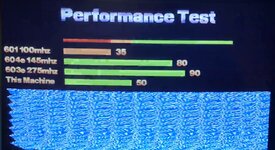CC_333
Well-known member
Yeah, but see, at least in the context of the Power Macs, that was largely because the 603 lacked sufficient cache (8k vs the 601's 32k) for Apple's 68k emulator to run efficiently, and since the initial PPC releases of System 7 were mostly 68k code running in that emulator (indeed, for the initial release (7.1.2) I believe the emulator itself was the only thing that wasn't purely 68k), overall performance ended up being pretty mediocre, especially on the 603.Need to remember that the 601 is better than the 603, clock for clock. So a 117MHz 603 is less good than a 100MHz, perhaps even 80MHz or lower, 601.
The 603e rectified this by doubling the L1 to 16k.
c
Last edited:

